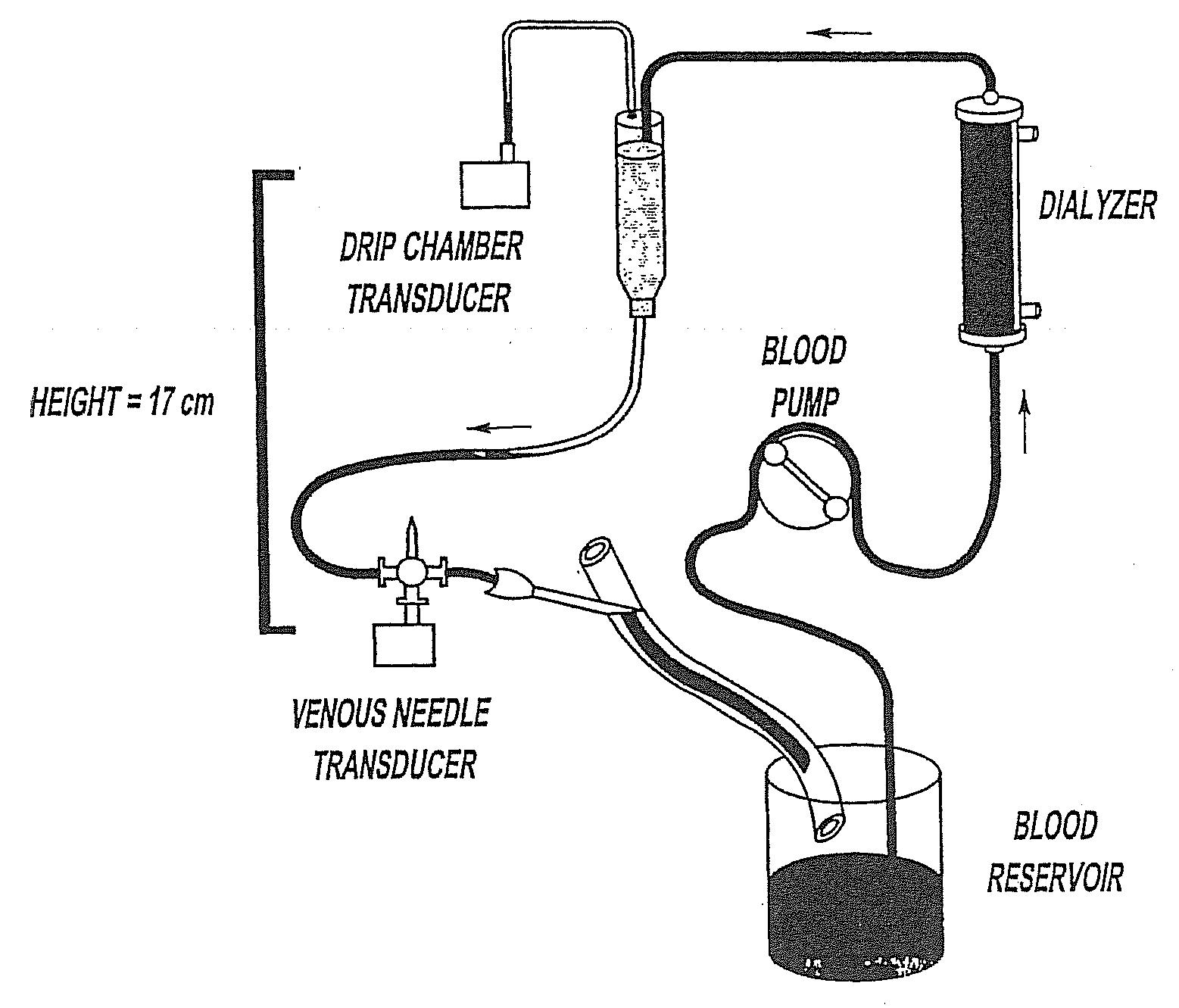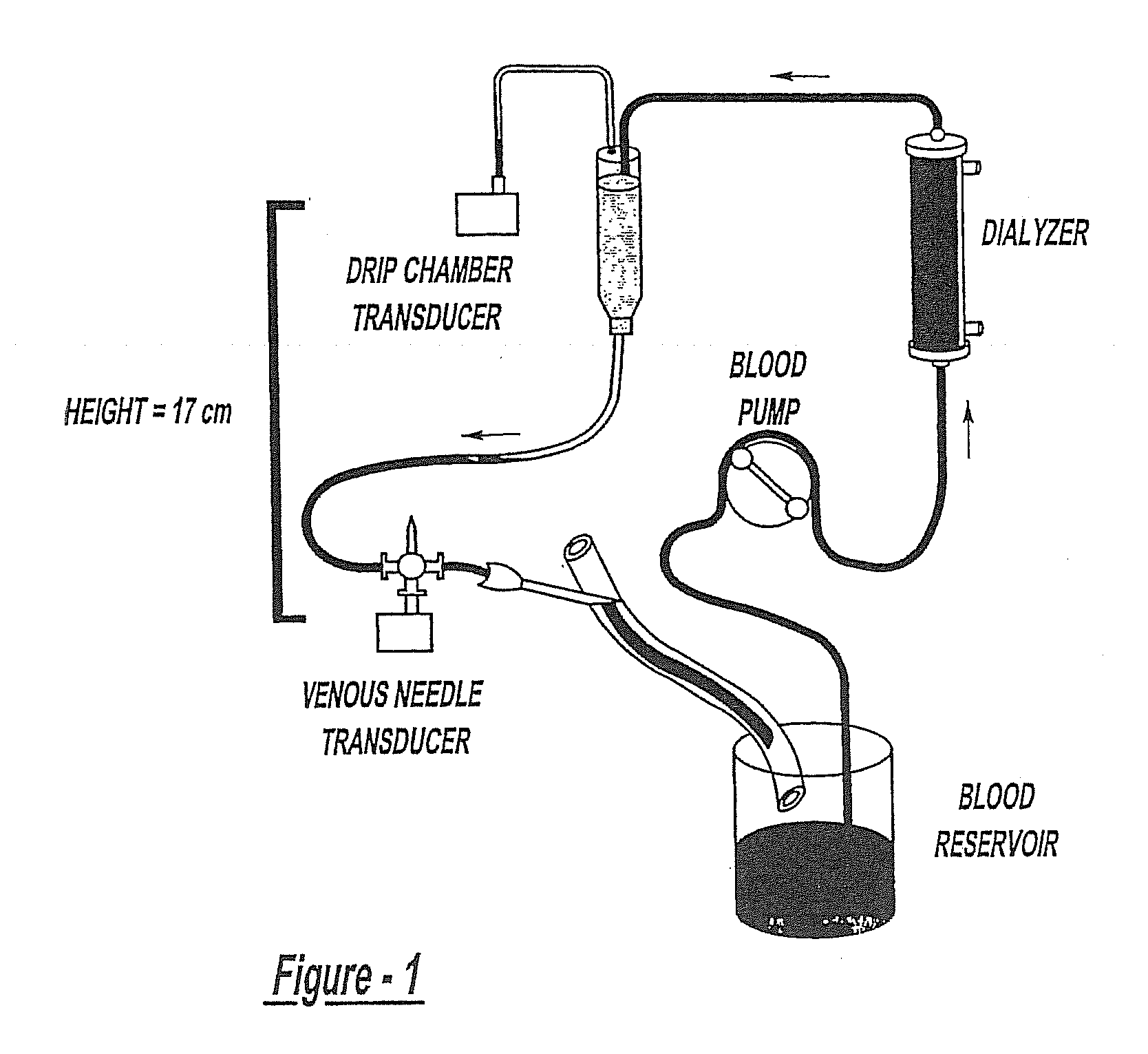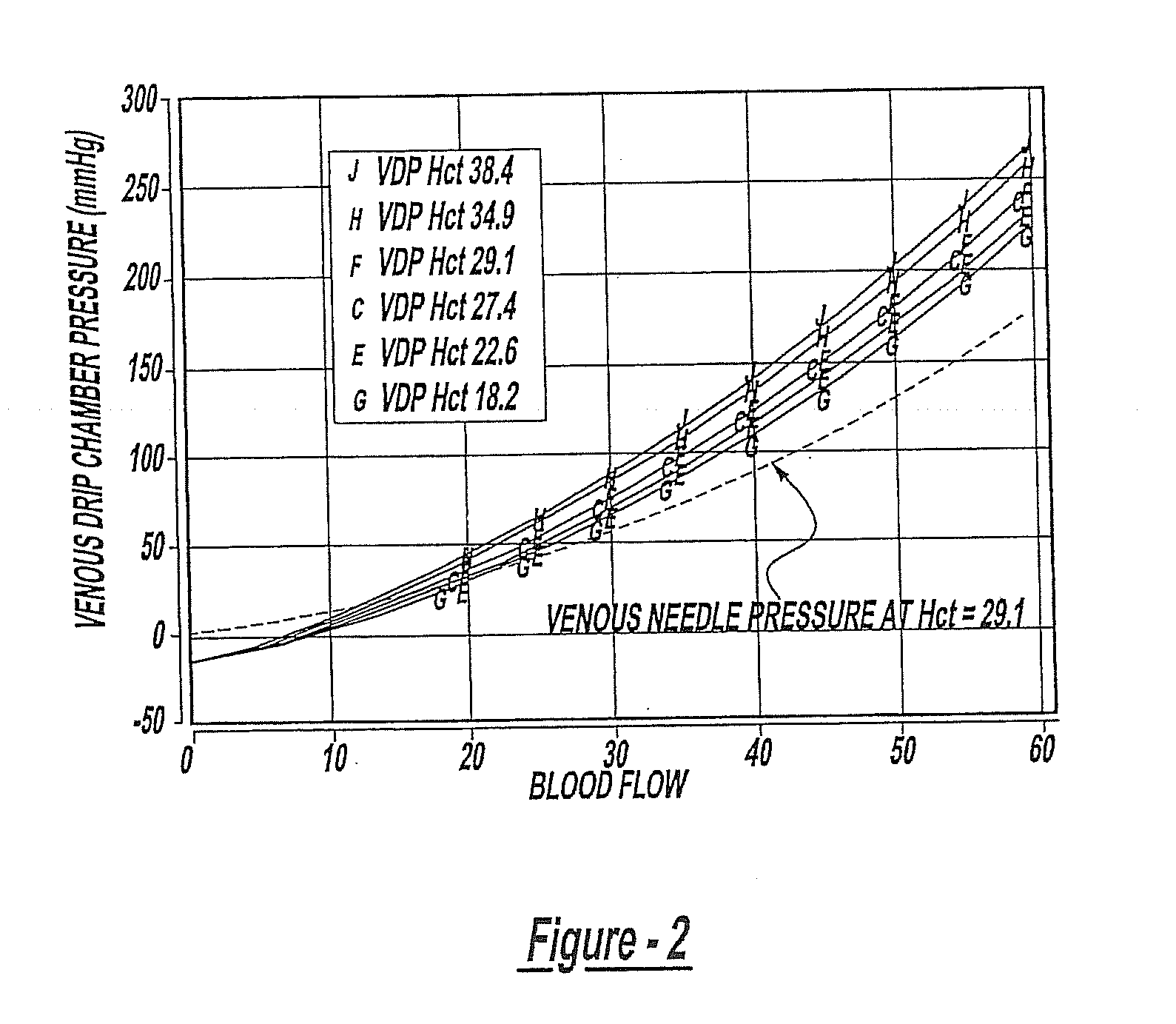Method of Monitoring Dislodgement of Venous Needles in Dialysis Patients
a technology of venous needles and dialysis patients, which is applied in the field of devices and methods for detecting failure in dialysis systems, can solve the problems of vascular failure, oxygen delivery starting to fall, and organs and tissues supplied by those vessels are deleteriously affected and can even fail completely
- Summary
- Abstract
- Description
- Claims
- Application Information
AI Technical Summary
Problems solved by technology
Method used
Image
Examples
example 1
Criterion for the Venous Access Pressure Ratio Test
[0066]To determine the VAPR cutoff value most predictive of access failure, test data and follow up data were analyzed from 117 patients with grafts who received hemodialysis treatment at three hemodialysis facilities during January 1999. VAPR in these patients were correlated with the presence or development of access dysfunction, stenosis requiring intervention by angioplasty or surgical revision to maintain access patency, or the occurrence of thrombosis within the six months of follow up observation. A six month observation period was selected because data reported showed that primary unassisted patency for grafts at six months is 64% and secondary assisted patency is 70% at six months, which is in accordance with data from Sparks (15) showing a primary patency for grafts of 64% at a median of seven months. The data from these studies indicates that in any six month period 30 to 36% of all grafts can fail. The VAPRT is being use...
example 2
[0090]An alternative method is provided for measuring access pressure through an access needle that is flow-connected to the vascular system of a patient. The method comprises the steps of: connecting one end of pressure tubing to the outer end of the access needle tubing, with a membrane blocking the flow of blood while permitting the passage of air through to a pressure gauge. The membrane suppresses or dampens the pressure pulses or oscillations through the tubing. Thus, upon opening the access needle tubing to the vascular system, blood flowing into the tubing compresses the air in the pressure tubing, plus the connected gauge, causing pressure from the vascular system to be readable by the gauge while the pressure pulses are attenuated in a simple, nonelectronic manner.
[0091]The “membrane” mentioned above may be a microporous membrane, typically a microporous block or plug positioned within or adjacent to the pressure tubing and capable of providing the damping or attenuation o...
example 3
[0097]This example demonstrates the case where blood flow (Qb) is equal to zero in Equation (3). The constant term (−17.32509 in Equation (3)) needed to correct for the difference in height between the venous drip chamber and the level of the patient's access site was calculated for three different dialysis machines and clinical data was evaluated to demonstrate the effectiveness of the system.
[0098]The measurement of venous intra-access pressure (VAP) normalized by mean arterial blood pressure (MAP) facilitates detect venous outlet stenosis and correlates with access blood flow. General use of VAP / MAP is limited by time and special equipment costs. Bernoulli's equation relates differences between VAP (recorded by an external transducer as PT) and the venous drip chamber pressure (VDP) at zero blood pump flow, the difference in height (ΔH) between the measuring sites and fluid density determine the pressure due to the difference in height ΔPH-VAP-VDP. They were therefore correlated ...
PUM
 Login to View More
Login to View More Abstract
Description
Claims
Application Information
 Login to View More
Login to View More - R&D
- Intellectual Property
- Life Sciences
- Materials
- Tech Scout
- Unparalleled Data Quality
- Higher Quality Content
- 60% Fewer Hallucinations
Browse by: Latest US Patents, China's latest patents, Technical Efficacy Thesaurus, Application Domain, Technology Topic, Popular Technical Reports.
© 2025 PatSnap. All rights reserved.Legal|Privacy policy|Modern Slavery Act Transparency Statement|Sitemap|About US| Contact US: help@patsnap.com



